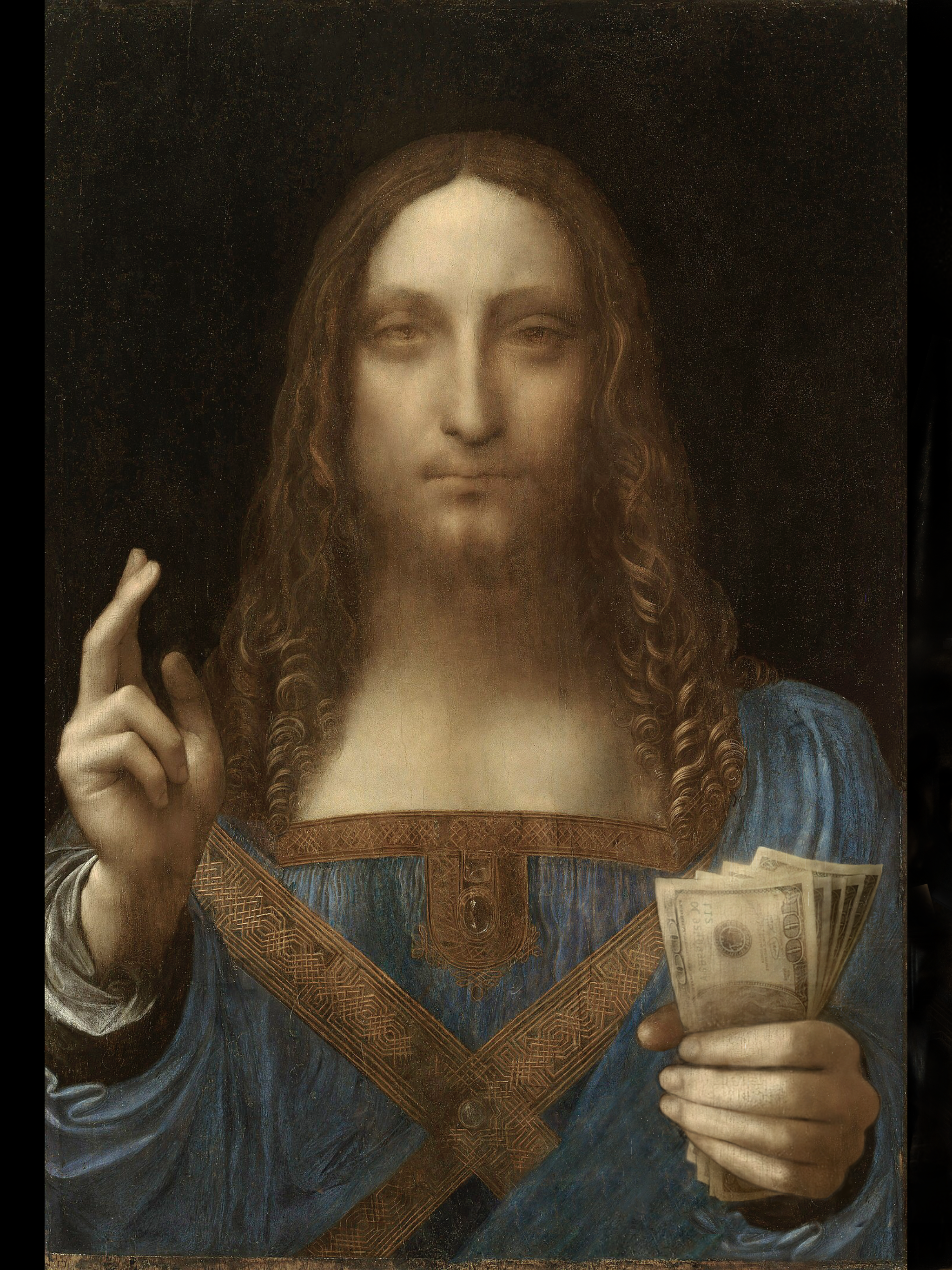
It sounds like an April Fools joke, and it both is and isn’t. Author and art historian Ben Lewis has created a real non-fungible token (NFT) of Leonardo da Vinci’s Salvator Mundi—and, like the original, he’s hoping to auction it for $450 million.
Okay, he’s not really expecting to sell it for that much. Lewis, who charted the journey of the famous painting in his 2019 book The Last Leonardo, is not necessarily expecting to make any money at all. The point, he says, is to draw attention to the ways in which dealers and auction houses exploit the machinations of the art market to make millions—and the victims they leave in their wake.
Lewis is referring specifically to the Hendry family of Baton Rouge, Louisiana, who, according to Lewis’s research, sold Salvator Mundi for $1,175 in 2005, pocketing a mere $700 after fees. Old Master dealers Robert Simon and Alexander Parrish purchased the piece at an estate sale that same year for $10,000. In 2013, they sold it for more than $75 million to Swiss dealer Yves Bouvier, who then immediately flipped it to Russian collector Dmitry Rybolovlev for $127.5 million.
Rybolovlev took home at least $400 million when he consigned the painting to Christie’s four years later. That’s 571,000 times what the Hendrys received.
“It’s just not fair,” Lewis tells Artnet News. “The dealers—Robert Simon, Alex Parish, Dmitry Rybolovlev—they all made tens of millions. It would be great if they sent a bit of money down to this family. And I thought, to bring out that point, I’d turn this into an NFT.”
The author’s digital artwork, titled Salvator Metaversi, looks just like da Vinci’s painting, only instead of a glass orb, Jesus has a grip on $100 bills in his left hand. It was minted today on the online NFT platform Opensea, the Art Newspaper points out, and is currently bidding for .23 Etherium ($443). The sale will go through Easter weekend before ending on April 6. Half of any profits Lewis makes will be shared with the Hendry family. (Lewis isn’t the first to turn a rendition of the Salvator Mundi into an NFT.)
This is the first NFT adventure for Lewis, who explains that he’s not as interested in the medium as he is in the feverish market that formed, seemingly overnight, around it. “What interests me is the question: Is it a bubble or is it froth underneath something really serious?” he says. “I don’t know. It’s fascinating.”
Speculation or not, Lewis is not above making a little cash from the stunt.
“If there are all these crypto-millionaires who think ether is such a serious currency and NFTs are going to be the art form of the future,” he says, “well then they should put their money where their mouth is!”